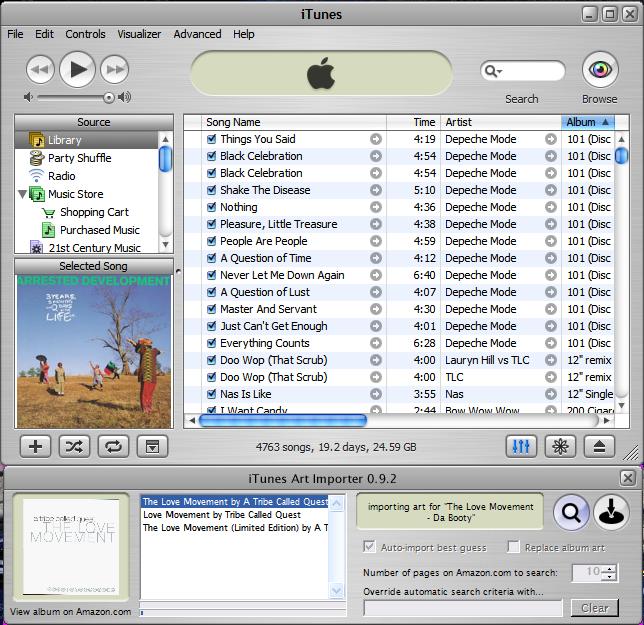Apparently Craig Andera and Tim Ewald were recently working on an MSDN code rewrite and were talking about building doc/literal/bare Web Services vs. doc/literal/wrapped.
I'm a little confused by their respective posts, as they appear to say too different things. (Coming up on Fox, When Smart People Disagree!) They were both in the same house, coding the same stuff, but Craig's conclusion about how to use SoapParameterStyle.Bare is very different than Tim's (and mine).
Tim suggests that getting an AddResponse type "for free" when writing code like this:
//SDH: This is bad, avoid it
[WebMethod]
[return: XmlElement("sum")]
public int Add(int x, int y) { return x + y; }
is lame, and I agree. The generared AddResponse type is totally magic, coming (by magic) from the Method name, which is a little too tightly-coupled for my tastes.
Instead, your functions should take as parameters and return as reponses formal types that you control. Then you can use the [SoapDocumentMethod(ParameterStyle = SoapParameterStyle.Bare)] attribute to avoid any extra automagically-added wrapped elements. This is purely a coding convention, it's not expressed in WSDL.
//SDH: This is not bad, embrace it.
[WebMethod]
[SoapDocumentMethod(ParameterStyle = SoapParameterStyle.Bare)]
[return: XmlElement("AddResponse")]
public AddResponse Add(AddRequest req)
{
AddResponse resp = new AddResponse();
resp = req.x + req.y;
return resp;
}
Tim's right on with this. We do the same thing at Corillian with our code-generation stuff (maybe I'll present on it sometime.) You can reuse the Request and Response messages this way, as well as take and return base classes.
However, Craig had a different view. He simply added the bare attribute to the method call:
//SDH: This is bad, think twice
[WebMethod]
[SoapDocumentMethod(ParameterStyle=SoapParameterStyle.Bare)]
public int Add(int x, int y) { return x + y; }
which results in
<?xml version="1.0" encoding="utf-8"?>
<soap:Envelope xmlns:xsi="http://www.w3.org/2001/XMLSchema-instance"
xmlns:xsd="http://www.w3.org/2001/XMLSchema"
xmlns:soap="http://schemas.xmlsoap.org/soap/envelope/">
<soap:Body>
<x xmlns="http://tempuri.org/">int</x>
<y xmlns="http://tempuri.org/">int</y>
</soap:Body>
</soap:Envelope>
Which is a non-WS-I Basic Profile compliant Web Service, as it has more than one child node under <soap:Body>. Craig muses "To me, this just seems like nicer XML; more like how I would do it if I were just using XmlWriter and raw sockets." I totally disagree with that statement, as XML Web Services are decidedly NOT about that level of abstraction. If you like talking with XmlWriter and raw sockets, why not yank the <soap:envelope> and those pesky namespaces? ;) If so, there's already a spec for you.
Additionally this places even more pressure on the HTTP SOAPAction header, which was always a bad idea. Fundamentally (at least in my World View) SOAP messages should be transport neutral and that's what wsa:Action is for.
So, conclusion? Be explicit. Use Request and Response messages as ins and outs for your Web Services, call them out and use SoapParameterStyle.Bare to avoid the extra wrapping element. Tim's list of reasons why is excellent.
Hosting By


